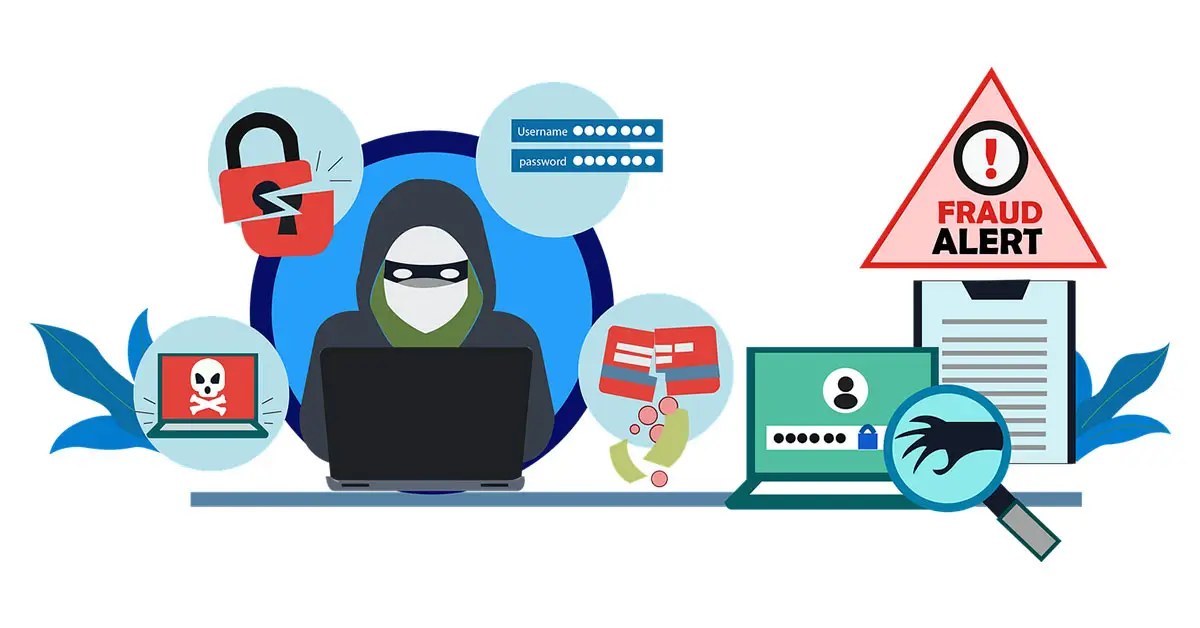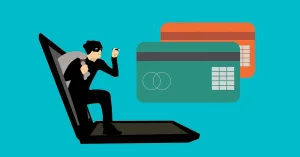Hacking doesn’t just happen in the movies. If you use a smartphone, laptop, or even a smart fridge, you’re susceptible to hacks. Nowadays, it’s not just time you’ll lose to hackers — money and memories are on the line too. Not to mention, if you own and operate a small business, hacks can jeopardize your customers and your reputation.
So, how do you go up against hackers and win? As with most cybercrime, knowledge of the criminals’ techniques and tailored cybersecurity measures are the best prevention. In this article, we’ll explore emerging hacks to watch out for in 2025, and all the practical tips you’ll need to stay safe online in the coming year. Let’s get started…
New Hacking Techniques to Look Out For
As technology advances, so do the techniques used by hackers. In 2025, experts predict that cybercriminals will refine and deploy emerging technology to deceive, steal, and manipulate. Here are some of the latest hacking techniques to be aware of in the coming year…
AI-Powered Phishing Attacks
Phishing, posing as a legitimate business or trusted individual to steal information through emails or texts, has been a mainstay of cybercrime for decades. The first phishing attack took place in 1994 and used a tool known as AOHell that enabled hackers to pose as AOL staff.
Nowadays, hackers can outsource the creation of phishing emails and messages to Artificial Intelligence (AI). This means that these messages will be error-free, can perfectly mimic the format of a particular business’s emails, and can be sent to an enormous number of recipients in less than a minute.
Perhaps the most concerning thing about AI-powered phishing attempts is that AI is designed to learn, meaning these hacks will likely become even harder to identify as we move through 2025.
Deepfake Fraud and Impersonation
Deepfake technology has already made waves in the media, but its use in cybercrime is expected to grow in the coming years. This is because, with the help of deepfake technology, hackers can create convincing audio and video clips of CEOs, your colleagues, and even your family members.
With the help of these fake clips, hackers emotionally manipulate their victims into providing them access to a device or bank account. This technology can also bolster the advances in phishing techniques mentioned above by adding legitimacy to fake messages from business leaders.
Ransomware-as-a-Service (RaaS)
Nowadays, hacking has become such a lucrative business that hackers can purchase tools from independent creators. One such example is Ransomware-as-a-Service (RaaS).
Ransomware, malicious software that takes your device hostage, preventing you from using it until you pay a ransom, is involved in 20% of all cyberattacks according to IBM. Nowadays, it’s being rented or sold by creators to hackers for a share in the final profits.
RaaS attacks have been on the rise since 2020, but as they allow less-skilled hackers to launch successful attacks, they’re only expected to increase. As RaaS’s popularity grows, so will the number of RaaS providers. Eventually, no two ransomware attacks will look the same, making it almost impossible for one security software to protect against all attacks.
Supply Chain Attacks Using AI and IoT Vulnerabilities
If you own a small business, you know it’s not just your data you need to worry about. Your customers put their trust in you to protect their personal and financial information, and you do the same every time you purchase raw materials from a third-party provider. This, of course, is the supply chain, and it’s vulnerable to hacks because of the sheer amount of data within it.
An unexpected threat to supply chains is the Internet of Things (IoT). Modern supply chains rely on a vast ecosystem of connected devices, from smart packaging sensors and warehouse robots to RFID tags and cloud-based inventory systems. This gives hackers a huge number of entry points into a system. What’s more, they can automate the hacking process with AI.
Quantum Computing and Cryptography Breakthroughs
Quantum computing, the use of quantum mechanics to enable devices to work faster, is the next stage in the evolution of computers. However, these devices are still being developed, and it may be a decade yet until they’re used at scale.
But, as we’ve seen, new technology means new techniques for hackers. Since quantum computers can solve more complex problems than the average laptop, they’re expected to pose a significant threat to encryption methods.
The rise of quantum computing has prompted cybersecurity experts to develop ‘quantum-resistant' encryption methods. In fact, in August 2024, the National Institute for Standards and Technology announced the release of new encryption software that may be able to withstand hacks from these new computers.
Cloud-Based Attacks on Personal and Business Data
Similar to phishing, hacks that target cloud storage systems are not new. You may have heard about the Raychat cloud database hack in 2021, which gave cybercriminals access to over 265 million emails, usernames, and passwords.
According to Google, 40% of businesses now use some form of cloud storage, meaning high-value targets like Raychat are just as easy to hack as individuals who use the cloud to store family photos. This is why cloud-based attacks are expected to increase in the coming years. What’s more, Machine Learning algorithms and other types of AI can now automate many of the hacking processes used to gain access to cloud systems.
How to Protect Your Devices and Data from Hacks
Even though many of the above hacking techniques are new, there are ways to stay one step ahead. Here’s how to protect your devices and data from emerging cyberthreats…
Use AI-Powered Protection
If hackers are taking advantage of AI, it’s only right that we do the same. Many email services now use built-in AI that can detect suspicious emails, filter them out of your inbox, or even stop you from receiving them altogether. Be sure to check whether your email provider offers this service, and continue using standard cybersecurity measures like avoiding suspicious links in emails.
Stay Vigilant with Video and Audio
Deepfake technology is making it harder to trust what we see and hear. If you receive a video or voice message requesting sensitive information or money, keep calm and confirm the request through another communication method like email or a phone call.
It’s also worth researching how deepfakes are created. This will give you an idea of where the technology falls short, and the red flags that indicate a video or audio clip is a deepfake. For example, despite its sophistication, deepfake technology hasn’t mastered light and shadows. If a light source in a video appears inconsistent or shadows appear randomly, it may be a deepfake. As for audio, strange noises and ‘jumpy’ speech are two common warning signs.
Backup and Use Multi-Factor Authentication
The rise of RaaS means that almost anyone can launch a ransomware attack. Fortunately, Multi-factor authentication (MFA) still remains the best cybersecurity measure to defend against these hacks. Make sure to enable MFA on all of your online accounts and devices so that even if hackers obtain your password, it’ll be much harder for them to gain access to your account.
Additionally, make regular backups to hard drives. This will ensure that, even if you fall victim to a ransomware attack, you’ll have all the data that’s stored on your device in a secure, second location, and won’t need to pay any ransom.
Protect Your Connected Devices
The interconnected nature of smart devices and cloud services can provide hackers with multiple entry points to your data. To safeguard your network, make sure that you change the default passwords on your devices, whether it’s a smart fridge, home security system, or thermostat.
Another cybersecurity technique to look into is network segmentation. This separates your home or business network into smaller ‘sub-networks,’ ensuring that if a hacker breaks into one area, it’s harder for them to access everything else. An easy way to do this is by connecting your devices to an SSID or guest network through your internet router.
Vet Third-Party Providers
If you own a small business, it’s vital that you vet your suppliers before working with them. This can be as simple as asking for their most recent cybersecurity audit, or even requesting a tour of the security measures they currently employ. If you have a choice of suppliers, write up a risk assessment for each and choose the most secure option.
To further protect your business and customers, operate on a Zero-Trust model. Essentially, this means that no one, whether they work for you or for one of your partners, gets automatic access to your systems. Everyone will need to perform MFA on each of their devices every time they need to log in.
Upgrade Encryption Methods
Although quantum computing is still in its infancy, it’s not too early to start preparing for its inevitable widespread adoption. Keep an eye on updates to security software that will be able to withstand quantum codebreaking. And, for the time being, ensure your email provider and any cloud storage systems you use have end-to-end encryption.
In Conclusion…
The seemingly endless advances in hacking techniques can be a terrifying prospect, especially if you store data on your devices that hackers deem valuable. However, as mentioned, knowledge is your best defense.
By understanding the latest hacking techniques and the ways in which you can protect against them, you’ll be able to stay one step ahead of cybercriminals. Whether you’re safeguarding personal data, protecting sensitive customer information, or simply trying to keep your smart fridge on lock, consistent vigilance and proactive measures can make all the difference.
Advances in technology and the subsequent improvements in hacking techniques are inevitable. But so is the development of cybersecurity measures that defend against them. With the right knowledge and tools, you can stay safe and secure no matter what techniques hackers use.
Sources and Resources
- https://www.splashtop.com/blog/cybersecurity-trends-2025
- https://www.theguardian.com/technology/2020/jan/13/what-are-deepfakes-and-how-can-you-spot-them
- https://www.crowdstrike.com/en-us/cybersecurity-101/ransomware/ransomware-as-a-service-raas/
- https://itsupplychain.com/insights-into-iot-device-security-for-supply-chains/
- https://www.cyberark.com/resources/blog/how-the-iot-intensifies-software-supply-chain-risks
- https://kpmg.com/au/en/home/insights/2024/04/cyber-security-risk-from-quantum-computing.html/
- https://www.americanscientist.org/article/is-quantum-computing-a-cybersecurity-threat
- https://www.cdsec.co.uk/blog/cloud-services-in-the-focus-of-hackers-attention-analysis-of-current-threats/
- https://www.aquasec.com/cloud-native-academy/cloud-attacks/cloud-attacks/
- https://www.checkpoint.com/cyber-hub/threat-prevention/what-is-email-security/why-you-must-have-ai-for-email-security/





















Add comment